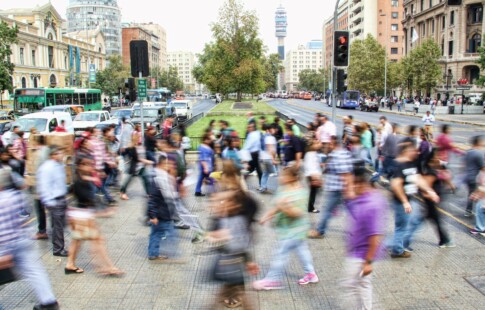
Amazing Examples of Sustainability Around the World
We are reader-supported. When you buy through links on our site, we may earn affiliate commission.
It’s all too easy to get caught up in doom-scrolling and eventually feel that no one’s doing enough for the environment. There’s always room for improvement, but the important thing to remember is that people are focusing on sustainability around the world. These collective efforts will make meaningful impacts on the planet and its inhabitants. Here are some examples to help you feel encouraged and ready to play your part, too.
Eco-Friendly Houses Built for Unsheltered Young People
Having a stable place to live is out of the question for many young people, especially if their parents have kicked them out or also deal with homelessness. However, an Arizona nonprofit called I Am You 360 has a sustainable housing program to help.
The organization manages a 10-unit building for formerly unhoused youth. However, some tenants will soon move to an eco-friendly village of 10 tiny houses. It’ll also include a water-harvesting system and a community garden.
Each unit will have modular blocks that get stacked and filled with concrete. This construction method leads to homes that are more energy efficient than those made from timber frames.
Desiree Cook, the nonprofit’s founder and executive director, said sustainability was a priority for the tiny homes. Then, they’ll be usable for generations. This is an example of sustainability around the world that can give beneficiaries hope through a new start.
Romanian Clothing Company Prioritizes Denim Recycling
Many clothing brands have treated sustainability as a mere buzzword lately. Indeed, companies should have various definitions that describe what sustainability means to them. However, the overarching goal is to operate with an understanding that the Earth has finite resources.
No 44 is a luxury brand of jeans based in Romania. The things that set the company apart go beyond its trendy styles and appealing selection. It has recently launched a program where people can send in their old jeans. Then, the fabric gets used to make new ones.
People who choose to participate get another perk. The company gives them a 20% discount on a new pair of jeans. This example of sustainability around the world is also refreshingly accessible. Individuals can send in any jeans, regardless of where they bought them or what they look like.
This is a creative way to help keep denim out of landfills. It also connects to the company’s goal to help people enjoy their jeans for more than one season, even when they wear them often.
Sustainability Is a Long-Term Achievement at Ireland’s Croke Park
Croke Park has operated as a stadium for Irish sporting events since 1891. Its leadership team began a sustainability program in 2007. They’ve seen numerous payoffs since then. Since 2014, the venue has diverted all of its waste from landfills. Relatedly, there has been a 12% reduction in the waste produced over the past five years. People at the venue even make compost from food and grass waste and distribute it to households that live around Croke Park.
Those involved in the venue’s sustainability initiatives also realized that the period after the holiday season was an excellent time to encourage people to be more sustainable. They created a program where interested parties could drop off things like home electronics and Christmas trees.
Croke Park officials began a wildlife-support program in 2015. It includes placing nesting boxes for birds around the stadium. Moreover, venue representatives manage a polytunnel to grow produce that gets served to guests. The venue even has an investment in a North Dublin farm that allows Croke Park to produce the turf needed for the upkeep of the playing fields.
Sustainability around the world means different things to different people. The examples here show there is no shortage of ways to help the planet by operating a business responsibly.
Country and City Officials Pursue Sustainability Around the World
You don’t have to look far to find world destinations that may soon become the leaders other places follow. For example, Brazil has become the first G20 country to take a data-backed approach to monitoring the sustainable development of all its cities. More specifically, it measures more than 100 indicators to track progress.
In Tokyo, Japan, the metropolitan government has unveiled an ambitious plan to make the city more sustainable. One goal is to have about half of the city’s energy come from renewables by 2030. By that same year, officials want to halve the food waste produced. Another 2030 target is to completely phase out gasoline-powered cars.
Brighton & Hove, a city in East Sussex, England, has emerged as a pioneer for sustainability around the world, too. It has a network of sustainable food initiatives that feed hundreds of people a day who would otherwise go hungry. Brighton & Hove also has more than 75 allotments that help people grow their food.
You can see these sustainable food projects come together in inspiring ways with a visit to the Gardener Cafe, run by the Real Junk Food Project. All the items on the menu get created with surplus items from the city’s restaurants and supermarkets.
Ghent, Belgium is also attracting attention for its sustainable initiatives. Consider how people can rent canoes from a nonprofit for the price of a bucket of trash they collect from the city’s waterways. The city also has parking garages for bikes, plus an energy-efficient way to light up the area’s monuments and historic buildings.
Sustainability Around the World Can Start With You
Hopefully, after reading about some of these forward-thinking initiatives, you’re thinking about things to do that could make your city, town, or country more sustainable, too. Remember that all efforts can start as small attempts and become larger over time. As people near where you live and further away learn more about what you’re doing, they may become motivated to continue your efforts and broaden the overall impact.
A good starting point is to think about which aspects of sustainability ignite your passions the most. Are you committed to supporting local wildlife, diverting more waste from landfills, or encouraging people to grow food for their meals? Those are all possible focal points. When you’re genuinely enthusiastic about your sustainability priority, it’ll be easier to stay upbeat and encourage others.
Share on
Like what you read? Join other Environment.co readers!
Get the latest updates on our planet by subscribing to the Environment.co newsletter!
About the author
Grace Waters
Always inspired by the natural world around her, Grace grew up exploring tide pools and hiking mountain trails, developing a deep appreciation for biodiversity and conservation. Now, Grace works as the Senior Editor of Environment.co where she covers topics related to emerging clean technologies, zero-waste initiatives, and the intersection of environmental policy and everyday living.





